Israel - Palestine Conflict: History, Timeline, Causes and More
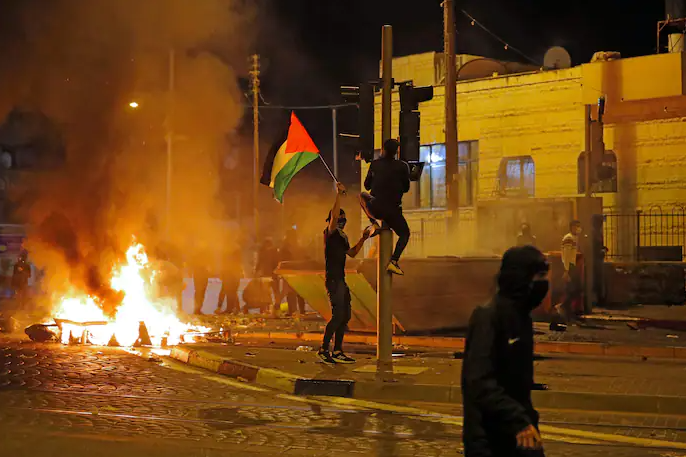 |
| Israel – Palestine Conflict |
| Table of Contents |
Israel – Palestine Conflict: Reasons & Background
The only Jewish state in the world, Israel, is situated close to the Mediterranean Sea to the east. Arab residents of the area that Israel currently occupies who call themselves Palestinians want to create a state called Palestine on all or a portion of the same territory. Who gets to own what land and how it is controlled is at the heart of the Israeli-Palestinian conflict.
While the current political conflict dates back to the early 20th century, both Jews and Arab Muslims date their claims to the land back several thousand years. Jews who had fled persecution in Europe sought to create a national homeland in the Ottoman and later British Empire, which at the time had a majorityArab and Muslim population. The Arabs resisted because they believed they had a right to the land. Israel and the neighboring Arab countries fought several wars over the region after an early United Nations plan to distribute portions of the land to each group fell through. The results of two of these wars—one fought in 1948 and the other in 1967—are largely reflected in the lines that exist today. The 1967 conflict is particularly significant because it gave Israel control over the West Bank and Gaza Strip, two areas with sizable Palestinian populations.
How Israel became a country?
Jews were persuaded to establish their own nation as a result of social and political changes in Europe, and their ancestral homeland appeared to be the ideal location. Jews in Europe, who made up 90% of all Jews at the time, were introduced to secular nationalism during the Enlightenment and as anti-Semitic persecution increased. Between 1896 and 1948, hundreds of thousands of Jews, many of whom had been ejected from Europe during the Holocaust, relocated from that continent to what was then British-controlled Palestine.
Many Arabs viewed the Jewish immigration as a European colonial effort, and the two races engaged in violent conflict. The United Nations decided to divide the area into two countries in 1947 after the British were unable to stop the violence. The deal was accepted by the Jewish locals. The plan was opposed by the Palestinians, who saw it as a continuation of a long-standing Jewish effort to drive them off their land. Later, Israel was attacked by the Arab nations of Egypt, Jordan, Iraq, and Syria as well (though not in support of the Palestinians).
In a bloody conflict that resulted in the displacement of 700,000 Palestinian civilians, Israeli forces defeated Palestinian militias and Arab armies. By the end of the war, Israel held 77 percent of British Palestine, which included everything except the West Bank, the eastern part of Jerusalem (which was under Jordanian control), and the Gaza Strip (which was under Egyptian control). The UN partition had allocated the Jewish state 56 percent of British Palestine. Palestinians were left without a state, but Israelis did.
Why Jerusalem & Religious Sites are so Important?
Jerusalem is regarded as Israel's "unified, eternal" capital. In the 1967 Middle East conflict, it had taken control of Gaza, the West Bank, and east Jerusalem, which includes the Old City. The Palestinians want those areas to become their future nation, with East Jerusalem as its capital. However, Israel made an unauthorized international annexation of the eastern portion of the city. One of the most challenging issues in the peace process, which came to an end more than ten years ago, has been what will happen to east Jerusalem.
Because it was the site of biblical temples, the walled plateau is also the holiest place for Jews, who refer to it as the Temple Mount. In 70 A.D., the Romans destroyed the Second Temple, leaving only the Western Wall standing. Centuries later, the mosques were constructed. According to NBCB, the Western Wall, also referred to as the Wailing Wall, is the most sacred place for Jews to pray.
In defiance of regulations put in place after 1967 by Israel, Jordan, and Muslim religious authorities, religious groups of religious and nationalist Jews have been visiting the compound in greater numbers and holding prayers in recent years, escorted by police. The frequent Jewish visits and attempts at prayer are seen by the Palestinians as a provocation, which frequently starts fights or more severe forms of violence. According to some Israelis, all worshipers should be able to visit the site. Palestinians refuse out of concern that Israel will eventually annex or divide the area. According to Israeli officials, there will be no change to the current situation.
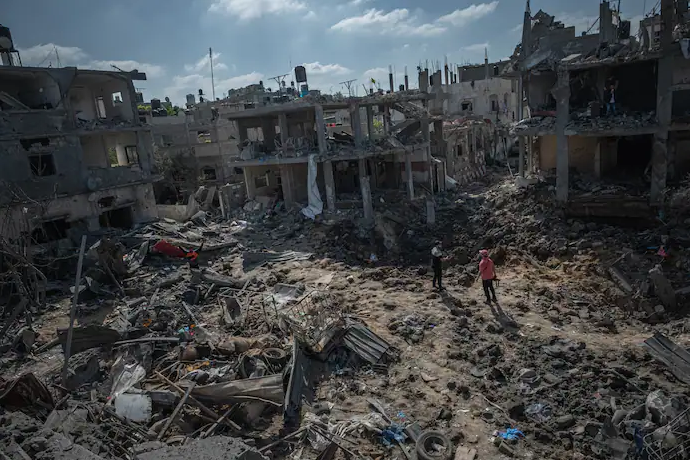 |
| People inspect the damage in Beit Hanoun in the Gaza Strip on May 14, after a night of Israeli airstrikes. (Photo: Getty) |
Timeline of major events
The conflict and mistrust have long-standing, complicated roots that frequently predate the creation of the state of Israel in 1948. Over the past seven decades, there have been wars, uprisings, and, occasionally, glimmerings of hope for a resolution.
1948: As the British mandate over Palestine ends and Israel declares its independence in May 1948, a regional conflict intensifies. Israeli forces are opposed by an alliance of Arab nations and Palestinian groups. Israel ultimately has control over a sizable portion of its territory. Thousands of Palestinians are forced off their land or forced to flee.
July 1956:A crucial trade route linking the Red Sea and the Mediterranean, the Suez Canal is nationalized by Egyptian President Gamal Abdel Nasser. Israel invades Egypt first, then British and French forces join it. Fighting is put an end by a peace agreement supported by the US and the USSR. However, due to sunken ships blocking the canal, it did not reopen until 1957.
June 1967: Beginning with Israeli ground forces entering the Sinai Peninsula and Israeli warplanes attacking Egyptian airfields, the "Six-Day War" is declared. Long-running disputes, such as Egypt's ongoing prohibition of shipping into the Gulf of Aqaba, contributed to the outbreak of the war. Jordan joins the battle alongside Egypt, but Israeli forces prevail after almost completely destroying Egypt's air force. Israel seizes control of East Jerusalem, which is largely populated by Arabs, the Gaza Strip, Sinai, the West Bank, and the Golan Heights. Many Palestinians are displaced or forced to flee.
October 1973: Egypt and Syria are the leaders of a coalition of Arab countries that launch an unexpected attack on Israel. Arab forces initially made progress, but an Israeli counteroffensive supported by supplies from allies, including the United States, drove them back.
1978: The Camp David accords, which are a peace agreement between Israeli Prime Minister Menachem Begin and Egyptian President Anwar Sadat, were mediated by President Jimmy Carter on September 17, 1978. Although they were discussed, potential Palestinian peace proposals were never implemented.
December 1987: A Palestinian uprising, or intifada, brings clashes and protests in the West Bank, Gaza, and Israel. Unrest continues for years, with many killed or injured on both sides.
1993: The Oslo accords, the first of two parts that outline a peace process based on prior U.N. resolutions, are signed by Israel and the Palestine Liberation Organization. (An additional agreement was signed in 1995.) In order to control the majority of administrative matters in the West Bank and Gaza, the agreements established the Palestinian Authority. Israel and the US both acknowledge the PLO as a potential negotiating ally. However, important issues like Israeli settlements in the West Bank and the status of Jerusalem, which the Palestinians believe should be the capital of any future state, remain unresolved.
2000: After riots broke out after Ariel Sharon, a right-wing Israeli politician who later became prime minister, visited a Jerusalem compound revered in Judaism, Christianity, and Islam, the second intifada, or Palestinian uprising, began. Disputes and other acts of violence continue until 2005, with hundreds of casualties on both sides.
2006: The Palestinian militant group Hamas wins elections in Gaza, leading to political strains with the more moderate Fatah party controlling the West Bank.
December 2008: Israel begins three weeks of attacks on Gaza after rocket barrages into Israel by Palestinian militants, who are supplied by tunnels from Egypt. More than 1,110 Palestinians and at least 13 Israelis are killed.
November 2012: Israel kills Hamas military chief Ahmed Jabari, touching off more than a week of rocket fire from Gaza and Israeli airstrikes. At least 150 Palestinians and six Israelis are killed.
Summer 2014: Israeli military forces respond after three Israeli teenagers who were abducted near a Jewish settlement in the West Bank are killed by Hamas militants. In response, Hamas launches rocket attacks from Gaza. In Gaza, a seven-week conflict has claimed more than 2,200 Palestinian lives. Six civilians and 67 soldiers are killed in Israel.
December 2017: The Trump administration recognizes Jerusalem as the capital of Israel and announces that it plans to shift the U.S. Embassy from Tel Aviv, stirring outrage from Palestinians.
2018: Demonstrators throw rocks and gasoline bombs over the fence separating Gaza from Israel as part of protests there. Over several months, Israeli troops kill over 170 protesters. Israel conducts a clandestine raid into Gaza in November. A senior Israeli army officer and at least seven suspected Palestinian militants are killed. Hundreds of rockets are launched into Israel from Gaza.
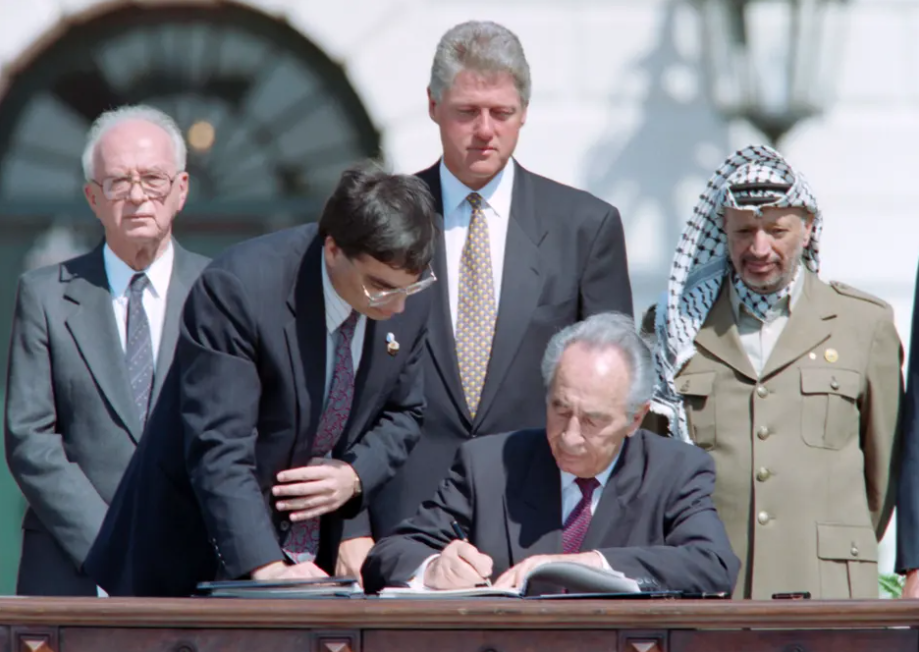 |
| Yitzhak Rabin, Bill Clinton, and Yasser Arafat watch as Shimon Peres signs the Oslo peace accords at the White House in September 1993. (Photo: Getty) |
International efforts to solve Israel – Palestine Conflict
What is the role of the United Nations?
The United Nations' involvement in the conflict has changed over the years, going from helpless to accomplice to broker. A statement emphasized "the inadmissibility of the acquisition of territory by war and the need to work for a just and lasting peace in which every State in the area can live in security" at the outset of Resolution 242. The resolution categorically demanded "the withdrawal of Israeli armed forces from territories occupied in the recent conflict" while only referring to the Palestinians as refugees and not affirming their national rights. The Security Council's four permanent members wrote the majority of the resolution; the US's influence can be seen in the resolution's scant mention of Palestinian rights. According to TNI, the same forces continued to work within the UN for another two years or so to influence the course and bounds of Israeli-Palestinian diplomacy.
Following the 1967 war, the UN repeatedly voted in favor of holding an international peace conference with all parties to the conflict under its auspices in order to end the Israel-Palestine conflict once and for all. But the US never cast a yes vote.
What is Peace Process?
The peace process—sometimes referred to as "Oslo"—is an ongoing initiative to mediate a peace agreement between Israelis and Palestinians under American supervision. The objective is a "final status agreement," which would create a Palestinian state in Gaza and the West Bank in exchange for Palestinians' consent to permanently halt attacks against Israeli targets – a strategy that is frequently referred to as "land for peace."
Through what became known as the Oslo peace process, Israeli officials headed by Yitzhak Rabin and Palestinian leaders from the Palestine Liberation Organization headed by Yasser Arafat worked to find a peaceful solution in 1993. The Oslo Accords, which serve as a foundation for foreseeable Israeli-Palestinian relations, were completed in 1993.
Yitzhak Rabin's murder marked a turning point in the delicate Oslo process, which continued in fits and starts until Arafat and Ehud Barak were unable to reach a compromise at Camp David in July 2000. Renewed negotiations failed to produce a deal, and the second intifada's escalating violence made further negotiations seem impossible.
Although the general Oslo "land for peace" framework failed in 2001, it continues to be the main American and international strategy for resolving the conflict. The Oslo update, known as the "road map," was promoted by the Bush administration, and the Obama administration gave the peace process top priority in its foreign policy. The Trump administration has not formally given up on this strategy, but neither has it made any significant progress.
What are the “two-state solution” and the “one-state solution”?
These are the two broad ways the Israeli-Palestinian conflict might end.
The widely accepted strategy for resolving the conflict is the "two-state solution," which would establish independent states of Israel and Palestine. The argument goes that Israelis and Palestinians have different ideas about how their nations should be governed—Israelis want a Jewish state, while Palestinians prefer a Palestinian one. The only solution that satisfies everyone involves dividing Palestinians and Israelis because neither side can get what it wants in a joined state.
Israel, the West Bank, and the Gaza Strip would all be combined into one large nation under the "one-state solution". There are two variations of it. One would establish a solitary democratic nation, which is supported by some leftists and Palestinians. Israel would cease to be a Jewish state if there were more Arab Muslims than Jews. The alternative proposal, which is supported by some right-wing Israelis and Israelis, calls for Israel to annex the West Bank while either expelling Palestinians or denying them the right to vote. Almost everyone in the world, including the majority of Zionists, rejects this choice as an intolerable violation of human rights.
Jewish leaders agreed to the two-state solution, but many Palestinians opposed it and it was never put into action. Some of these Palestinians had been fighting British interests in the area for decades.
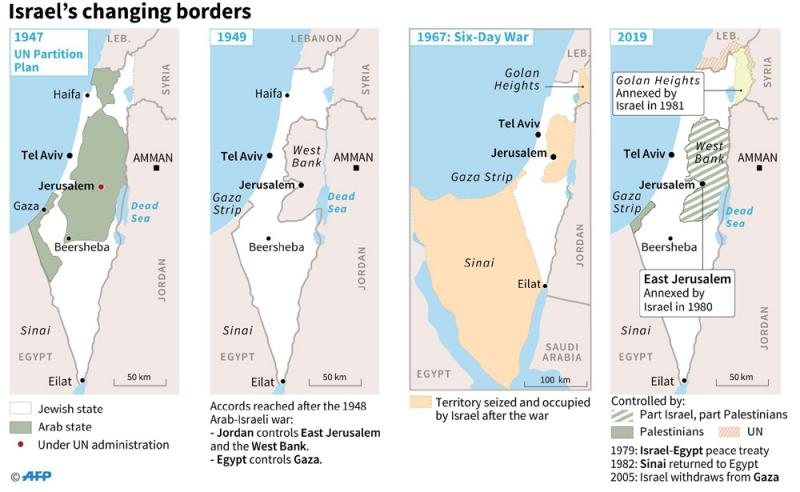 |
| Israel's changing borders. (Photo: AFP) |
Why the US involves in the conflict?
Many people today are aware that the US supports Israel's military offensives openly and provides it with annual aid totaling billions of dollars. It also consistently vetoes UN Security Council resolutions that criticize Israel. In the past, Washington has given Israel the most financial and military support of any other foreign nation because it sees Israel as a crucial political and economic ally in the oil-rich Middle East.
As the Cold War dragged on, the US began to support Israel because it saw it as a crucial barrier against Soviet influence in the Middle East. According to PBS, it wasn't until around 1973 when American assistance helped save Israel from a surprise Arab invasion that the American-Israeli alliance really came into its own.
During the Cold War, the US took a more active role in resolving conflicts and issues in the Middle East, and it continued to play that role as the only superpower in the 1990s. Due to a variety of factors, including the global oil market, American interests in Middle Eastern stability have not diminished.
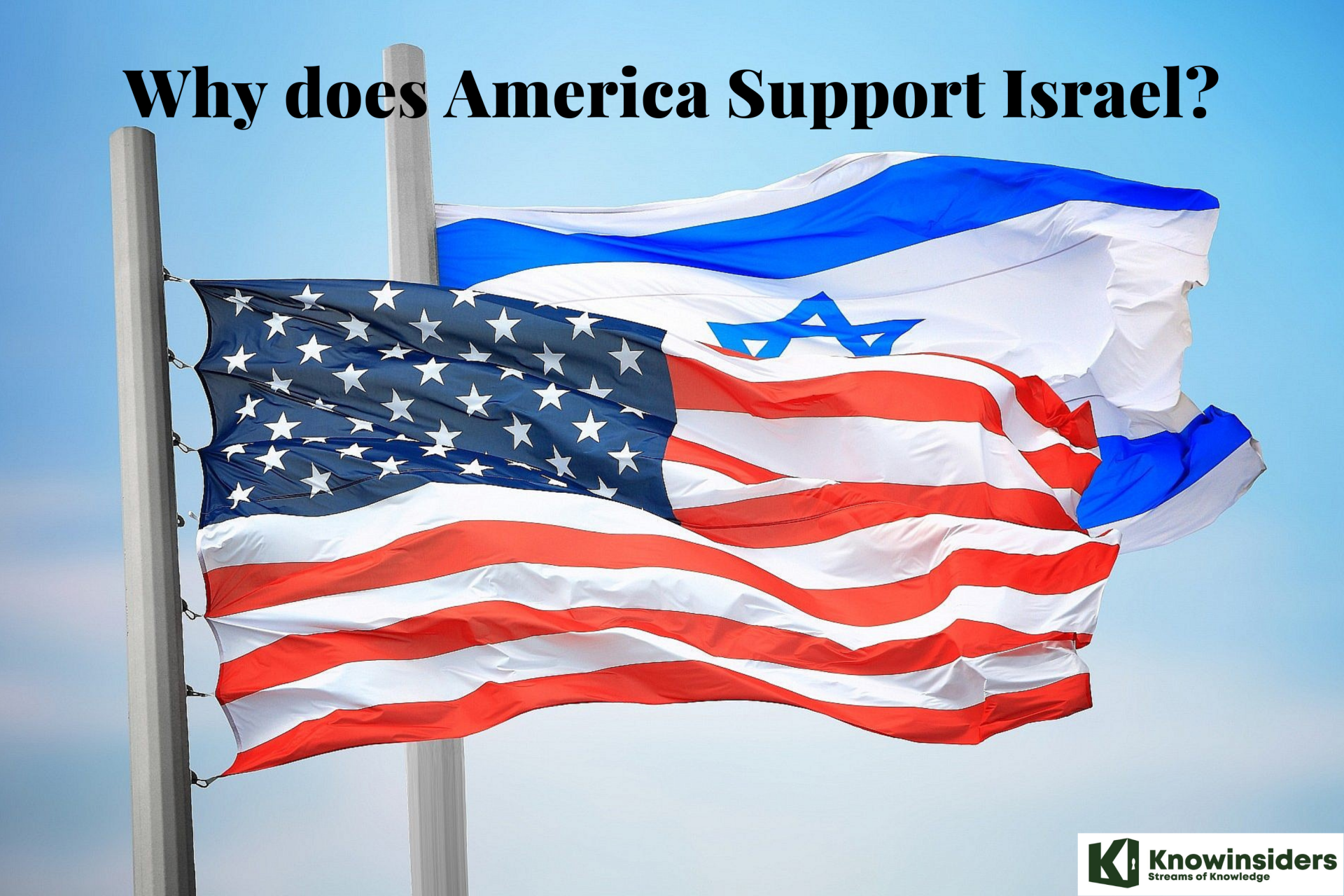 Why Does America Support Israel As A Best Friend? Why Does America Support Israel As A Best Friend? |
Israel – Palestine Conflict UpdatesAfter a devastating overnight attack by artillery and warplanes aimed at destroying a vast network of tunnels built by the militant Hamas group to move fighters, rockets, and other weapons, Israel pressed its air campaign against the Gaza Strip on May 15, 2021. Israeli citizens of Jewish and Arab descent continued to fight in cities across the nation, while the West Bank, which had been relatively calm lately, saw new clashes break out in Ramallah, Nablus, Tulkarem, and other cities. Health officials report that 11 Palestinians died in clashes with security forces in the West Bank. While this was going on, dozens of pro-Palestinian demonstrators from Lebanon broke through a border fence, entered Israeli territory, and lit a fire in a field close to the northern town of Metula. According to the Israeli military, they were fired upon by soldiers and fled to Lebanese territory. While this was going on, dozens of pro-Palestinian demonstrators from Lebanon broke through a border fence, entered Israeli territory, and lit a fire in a field close to the northern town of Metula. According to the Israeli military, they were fired upon by soldiers and fled to Lebanese territory. According to Al-Manar, Hezbollah's official TV channel, one of the protesters, a 21-year-old Lebanese man who was shot after charging the border, later passed away from his injuries. |
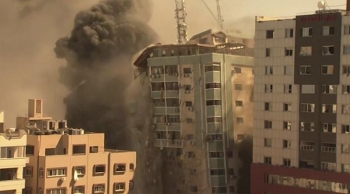 Israel - Gaza Conflict Latest News: Strike destroys building with AP, Al-Jazeera, other media Israel - Gaza Conflict Latest News: Strike destroys building with AP, Al-Jazeera, other media Israel-Gaza Attack News Updates: An Israeli airstrike destroyed a high-rise building in Gaza City that housed offices of The Associated Press and Al Jazeera ... |
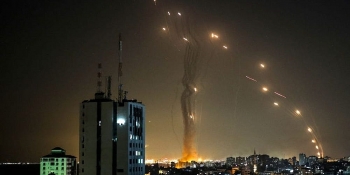 Watch Video: Israel's Iron Dome Defence Intercepts Scores of Gaza Rockets Watch Video: Israel's Iron Dome Defence Intercepts Scores of Gaza Rockets Watch video Israel's Iron Dome air defence system intercepts scores of Gaza rockets in skies above Tel Aviv. |
 FACTS about 'Is Eli Cohen still alive' with RT's 'short video' and Israeli Spy Biography FACTS about 'Is Eli Cohen still alive' with RT's 'short video' and Israeli Spy Biography Who is Eli Cohen and FACTS about a short video featuring Israeli Spy walking in Damascus, Syria. Latest News concerning Eli Cohen, who was hanged .. |

























